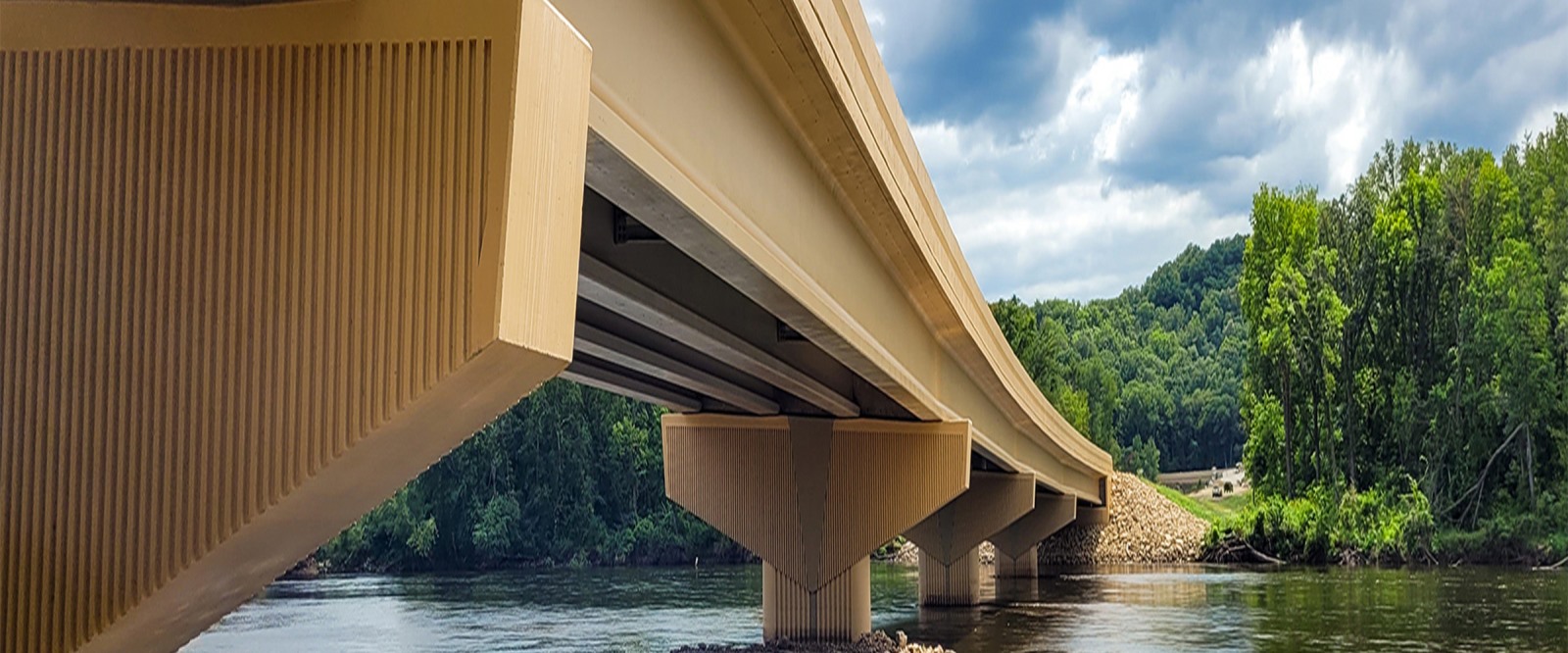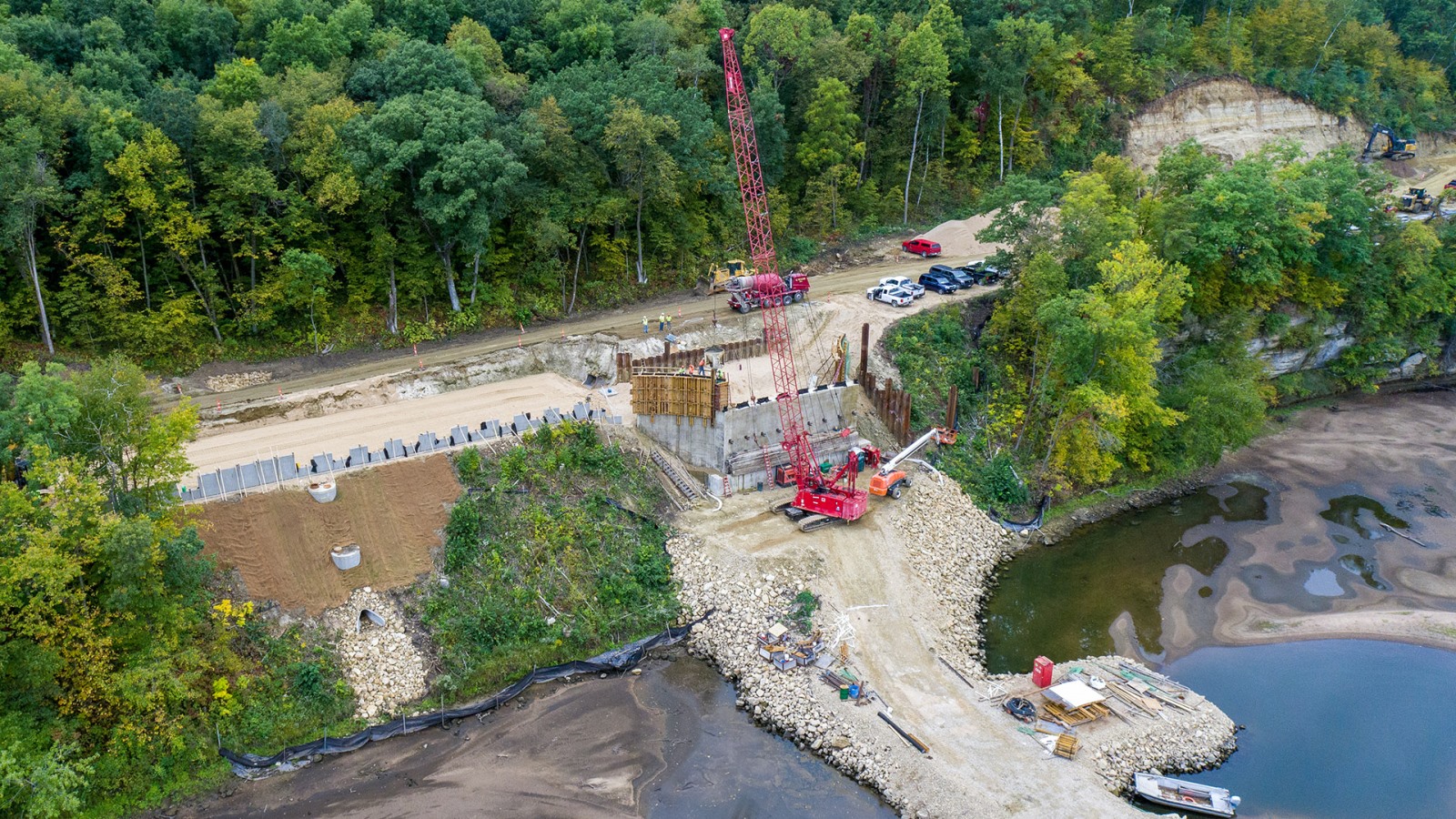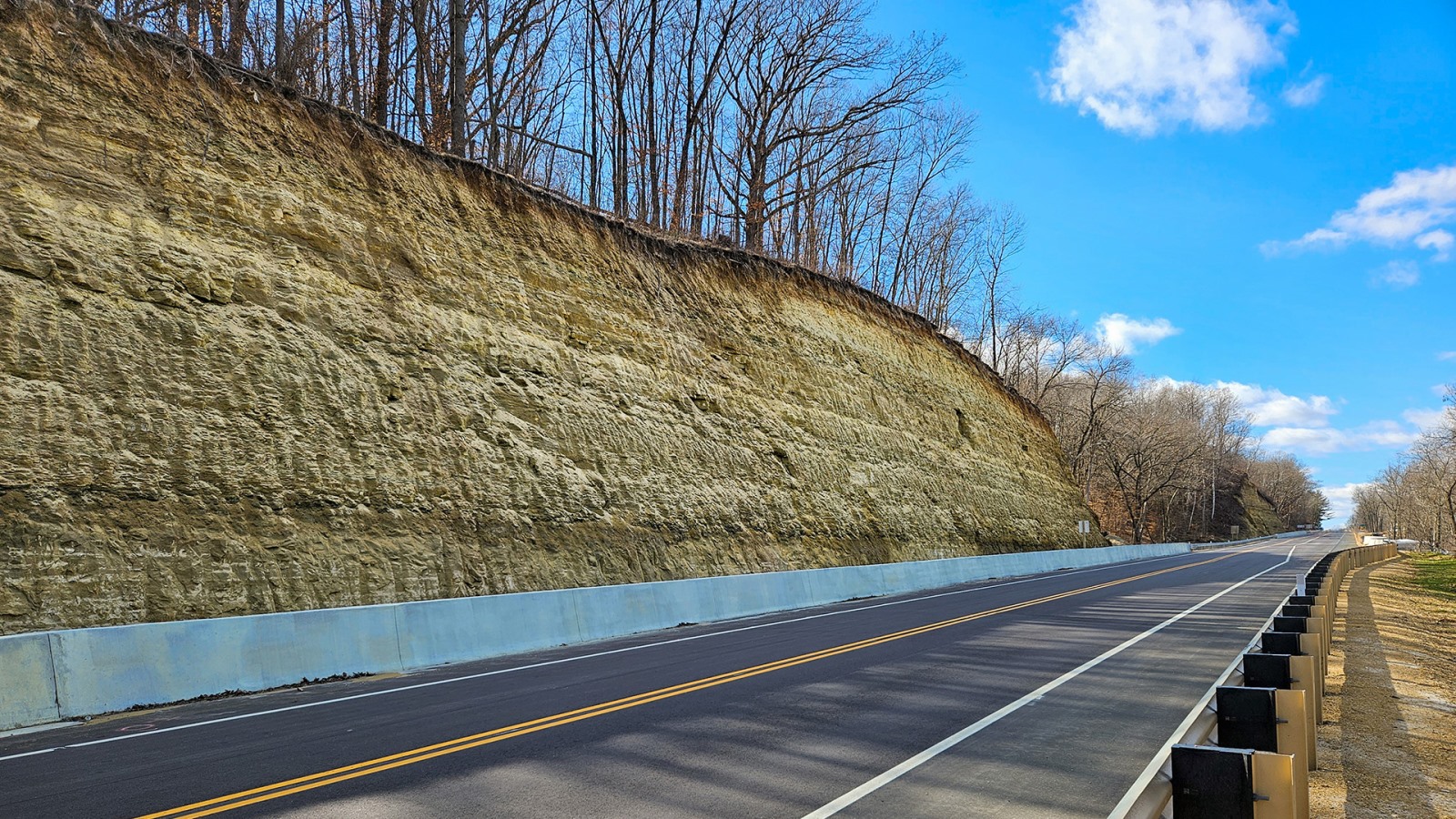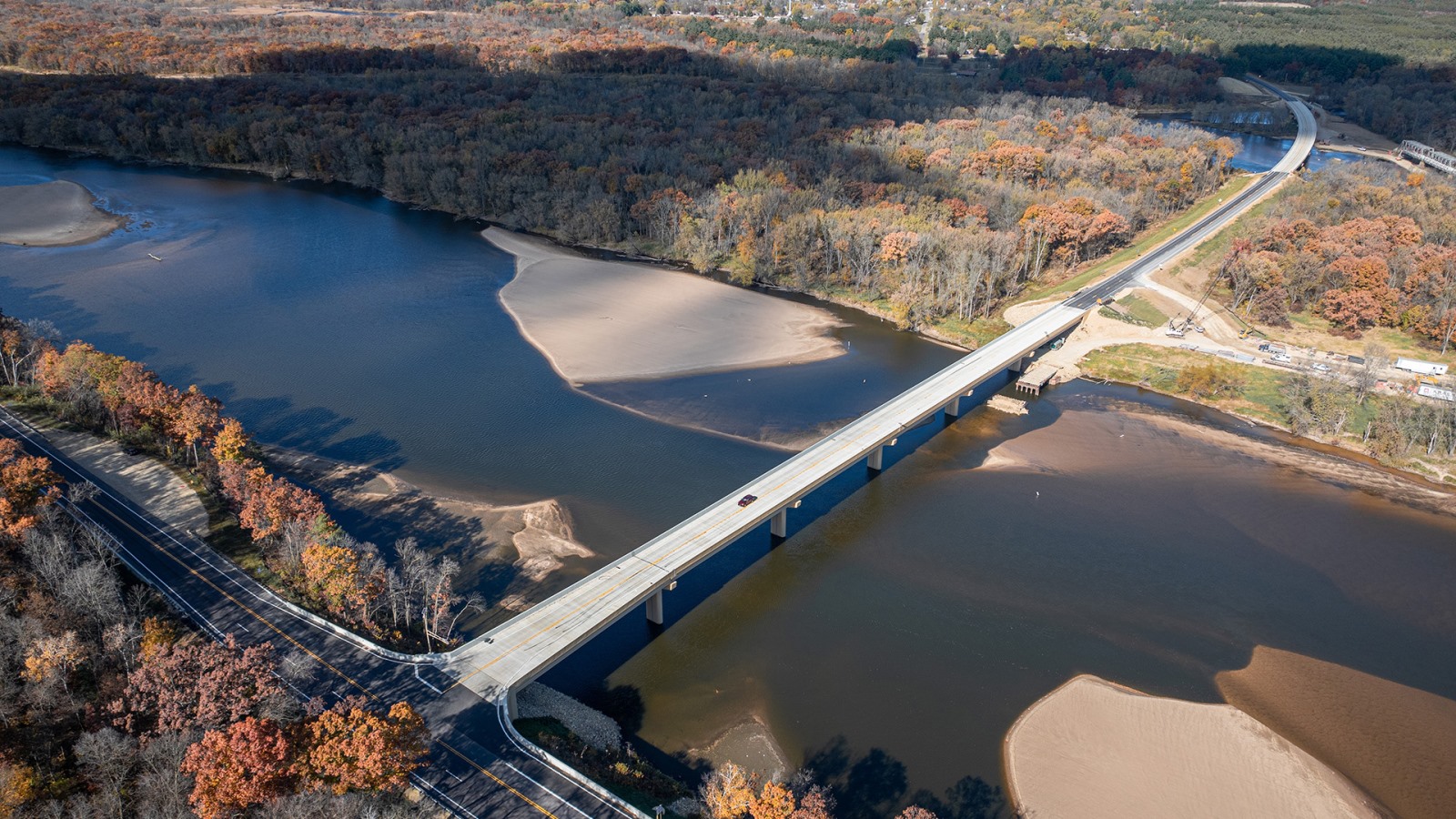Design-Build Delivery, Collaboration Key to Wisconsin River Crossing Project’s Success

Written by: Brian Genskow, SRF
![]() Just south of Lone Rock, the WIS 130 river crossing provides a vital thoroughfare for residents, emergency services, freight, and recreational access, connecting southwestern Wisconsin’s highway network to the U.S. Highway 14 east-west corridor. To address safety, mobility, and environmental concerns, the Wisconsin Department of Transportation constructed a new river crossing to replace three structurally deficient and functionally obsolete bridges constructed in the 1930s and 1940s. The project also realigned the WIS 130 further west to eliminate the rock-bluff hazard at the existing intersection with WIS 133.
Just south of Lone Rock, the WIS 130 river crossing provides a vital thoroughfare for residents, emergency services, freight, and recreational access, connecting southwestern Wisconsin’s highway network to the U.S. Highway 14 east-west corridor. To address safety, mobility, and environmental concerns, the Wisconsin Department of Transportation constructed a new river crossing to replace three structurally deficient and functionally obsolete bridges constructed in the 1930s and 1940s. The project also realigned the WIS 130 further west to eliminate the rock-bluff hazard at the existing intersection with WIS 133.
The new bridges opened to traffic one month ahead of schedule, and two years sooner than would have occurred with traditional project delivery.
Designer-Builder Partnership



SRF Consulting Group was the lead designer and major participant to contractor Kraemer North America, along with bridge design lead EXP. The project team worked closely with WisDOT through many challenges, including limited right of way, shallow bedrock, rock bluffs, steep slopes, wetland impacts, and geological diversity.
The design-build delivery method provided designers with continuous access to bridge and roadway contractors to gather input on construction means and methods and inform design. This open communication improved constructibility, helped maintain the construction schedule, and allowed for compatible material choices.
The project’s fast pace required the team navigate challenges within tight time constraints, which included rapidly advancing design to meet permit application deadlines. Designers utilized longer prestressed concrete girders for two new bridges, reducing the number of superstructure units. The bridge piers were changed from a trapezoidal “wall” to a “hammerhead” shape, resulting in less materials, a smaller river footprint, less construction time, fewer impacts to wetlands, and a more open view for river users. The reduced number of piers, along with the revised pier shape, generated savings of over $2 million and 12 weeks of construction.
At the new WIS 133 intersection, the river bluff and underlying bedrock was especially challenging. Creative soil investigations, comprehensive geotechnical and structural analysis, and in-depth involvement from the bridge and grading contractors, the MSE wall fabricator, and WisDOT were needed to develop bridge, wall, and roadway solutions meeting WisDOT design requirements.
Agency Partnerships
This project represents a new benchmark for cooperation between WisDOT, their contractor, and their engineering team. It helped the team optimize the benefits of design-build delivery, especially as it pertains to a fast-paced, technically-challenging, and environmentally-sensitive project. It became the first design-build project to enter construction under the state’s legislatively-defined Design-Build Pilot Program.
The project team also relied on other agencies, including the Wisconsin Department of Natural Resources, US Army Corps of Engineers, US Fish and Wildlife Service, and the Lower Wisconsin State Riverway Board (LWSRB), for their cooperation and guidance throughout the project.
For example, the project team developed a visual quality design process to address the LWSRB’s aesthetic requirements to efficiently develop and present visual details to the Board for approval as the design progressed.
The team prioritized public and emergency access needs during construction, working with emergency responders to carefully design and stage construction to maintain access and minimize closure time for all motorists. WisDOT and the contractor team met with officials and coordinated these plans regularly to maintain first responder access across the river and along WIS 133 by keeping the existing bridge and a work road open during construction.
Key Project Features
- New Bridge Design: Two new prestressed concrete girder bridges meet modern design standards, reduce wetland and floodplain impact, and enhance aesthetics for river users.
- Safety Improvements: The WIS 130/133 intersection realignment eliminates a rock face that was the site of frequent crashes. WIS 133 now includes turn and bypass lanes at that intersection, along with a permanent concrete barrier wall to minimize the rock fall hazards.
- Upgraded Roadway and Structures: The project included construction of 3,900 feet of two-lane roadway on the new WIS 130 alignment, reconstruction of 2,150 feet on WIS 133, beam guard installations, and new retaining walls.
With a well-defined scope of work and the project team’s depth of expertise, the flexible design-build delivery method was a perfect fit for the project, leading to accelerated delivery and development of innovative solutions and efficiencies in design and construction.
Read more about the WIS 130 Wisconsin River Bridges at Lone Rock project.

About the Guest Blogger
 Brian Genskow is a project manager with 12 years of engineering experience in roadway design and construction, including a diverse range of expertise in multiuse trails and urban, rural, and interstate highways. He served as the design lead for the WIS 130 Wisconsin River Bridges at Lone Rock Design-Build project. SRF Consulting Group is a 100% employee-owned engineering, planning, and design consulting firm creating lasting solutions to strengthen communities. SRF has been serving clients throughout the Midwest and nationwide for more than 60 years and is a longstanding member and strong supporter of ACEC WI.
Brian Genskow is a project manager with 12 years of engineering experience in roadway design and construction, including a diverse range of expertise in multiuse trails and urban, rural, and interstate highways. He served as the design lead for the WIS 130 Wisconsin River Bridges at Lone Rock Design-Build project. SRF Consulting Group is a 100% employee-owned engineering, planning, and design consulting firm creating lasting solutions to strengthen communities. SRF has been serving clients throughout the Midwest and nationwide for more than 60 years and is a longstanding member and strong supporter of ACEC WI.
